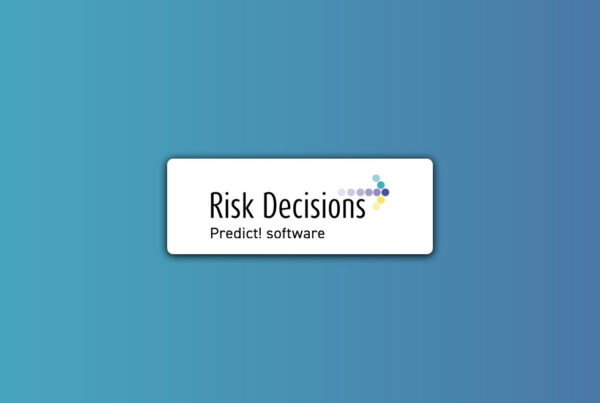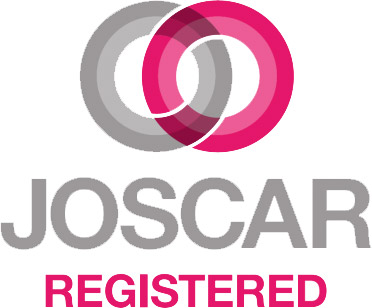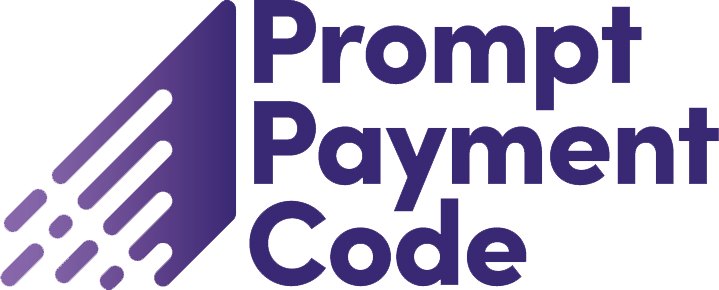Governments around the globe are preparing to rebuild economies following the impact of Covid-19. In the UK, the PM announced the Build Build Build project which is set to inject Billions into infrastructure.
As always the pressure to reduce construction project costs is intense, and this creates a very challenging bidding environment. Commit to an ambitious schedule and you could face a costly overrun, bid too high and you could lose the business altogether.
The trend for bidding low is eroding profit margins to the point where companies are going into administration. In a market where competition for new business is intense, deciding to no-bid takes courage, and requires sound justification. So what’s the solution for winning bids?
In this blog, we explain how understanding and analysing risk and uncertainty in the bid process can result in winning more bids, increase the confidence of on-time delivery and maximise profit margins.
The Challenge
Bids are projects in their own right, often with very tight and immovable deadlines, and they need to be managed as such. The challenge in developing the bid is that the delivery project often has a high degree of uncertainty, meaning the outcomes in terms of timelines and costs are hard to predict. In addition, clients expect that the bid timeline will be ‘aggressive’ and the price very ‘competitive’. But unless the impact of potential risks and uncertainties is understood it’s difficult to evaluate how risky a particular bid price might be in terms of making a profit or loss. Nor will you be able to understand the confidence you can have of achieving project milestones. In other words, if you don’t understand the risks and uncertainties involved, you are walking into the bid and any negotiations blind.
The Solution
The first step is for the bid team to have a coherent view of the impact of the project’s risks and uncertainties on the deliverables. Only then can you assess the probability of achieving particular timeline targets or budget, and make informed decisions.
The biggest risk is the uncertainty of your estimates!
We cannot stress this enough. Uncertainties often have a bigger impact on the project deliverables than risks. It is tempting to think that if the bid team applies more time and effort, the estimates would improve. However, the inherent uncertainties, especially given the lack of detailed information at the bid stage, mean that this is completely unrealistic.
In complex projects, it is inadequate to take a simple approach using point or average values for the key variables (e.g. time required to dig foundations), as these single-point estimates will give a false impression of accuracy. So, ranges or three-point estimates should be used. It is not uncommon for a Monte Carlo based schedule analysis using activity durations with three-point estimates, to show that there is less than a 30% chance of meeting the date predicted using single, average durations.
When under pressure in preparing a bid, running a Monte Carlo analysis against the schedule with uncertainty alone, can indicate issues with the schedule. It can also indicate whether there is a reasonable level of probability of delivering on time or budget: even before applying any risks. This could indicate the need to take a rapid and early decision on whether to bid and save the organisation the significant cost of bidding.
Learn the lessons of previous projects
Usually, the quickest route to developing a risk-based bid is to access information on the risks and uncertainties from similar previous projects.
Then have informed discussions about:
- Which risks actually happened?
- What was their impact?
- How effective were the risk mitigation actions?
- Are there any risks specific to this project?
- Review bid documents: contracts, estimates, plans, scope, etc, looking for: caveats, gaps, omissions, assumptions, errors,
- Interview key project players to explore issues in-depth and get team members to open up in a way that they might not in front of their peers.
Modern risk management tools can greatly assist in this process by providing an easily searchable database, with views across the portfolio that integrate key lessons to learn from previous projects and other current projects in the portfolio.
Use risk and uncertainty analysis to make key bid decisions
Applying a Monte Carlo approach which integrates risks and uncertainties provides a clear view of their impact on timelines and costs. This defines the extremes of the range, as well as the probability of a particular outcome. When setting budget targets this is an invaluable tool for you to answer the critical question, ‘at this price, what is the probability of making a profit or loss?’
The ability to quickly adjust the model enables you to see if you can achieve an optimal balance of cost and time. This approach allows the assessment of alternative strategies before presenting the bid and can form the basis for negotiating ‘tomb-stone’ risks out of a contract by getting the client to take responsibility for them and (significantly) lowering the bid price as a result.
Risk analysis allows you to prioritise the most significant risks and build mitigation actions into the bid. Ultimately, this approach allows the team to identify those bids to walk away from because the probability of making a loss is too high. Of course, you can also choose to bid aggressively on some projects that are strategically important. But by adopting the Monte Carlo approach consistently for all projects the risk exposure across the portfolio can be assessed.
Another benefit of this approach is that it provides a sound basis for entering into performance-based contracts.
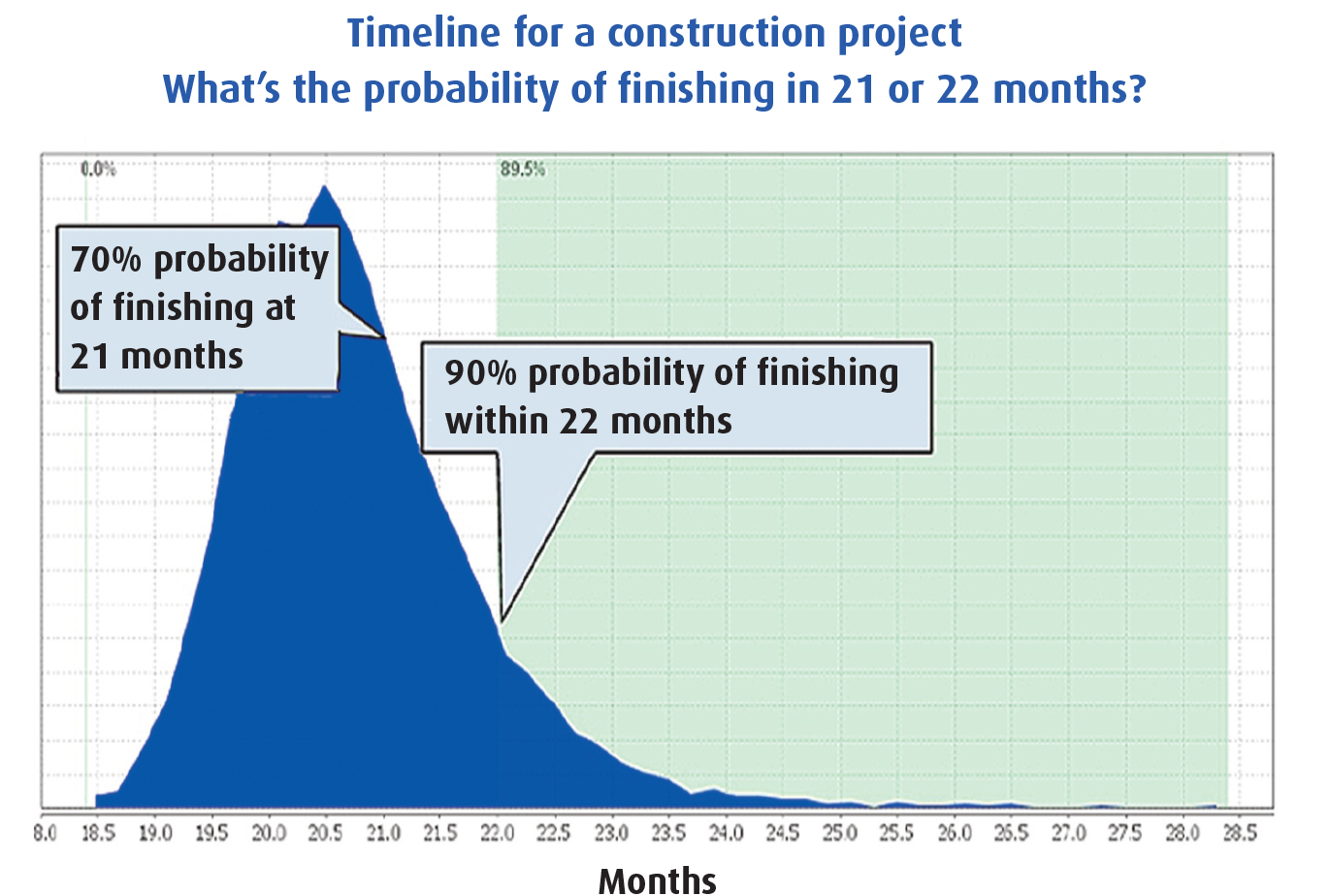
For example, a build is scheduled to take 20 months but taking uncertainty into account, the graph below shows that it could take between 18 and 28 months. Ultimately, the decision comes down to whether to commit to 21 or 22 months (with 70% and 90% confidence respectively). The final choice will depend on what level of risk you are prepared to take (your organisation’s risk appetite), your capacity to manage the potential overrun if you bid aggressively, the chance you will lose the contract to a competitor if you opt for a safer deadline and so on.
Without Monte Carlo analysis, it is impossible to understand if the bonus side of the contract would be achievable, or if the penalty side leaves you over-exposed.
The benefits
There are several benefits to adopting a risk-based approach to bid preparation and defence. For example:
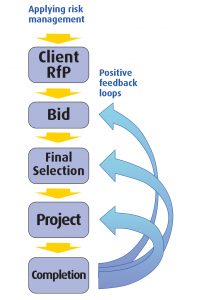
- By submitting at a bid price that realistically reflects the level of uncertainty and risk
- Taking a strategic decision to proceed with the bid knowing the risk exposure, and where the company ensures that it has the contingency funds to support it.
- You can decide to “No-bid” in the case of high-risk projects that without a change to the scope have a low probability of making a profit – with the result that you can focus on winning good, profitable business.
- Once you win the bid the project has a starting point in terms of risks.
Conclusion
Understanding a project’s uncertainties and proactively managing the potential risks gives a more accurate picture of what is feasible within a specified time-frame. It adds honesty and confidence to the bid and delivery process for both client and contractor.
Adopting risk management enables the bid team to build robust proposals avoiding the dangers of over-promising and under-delivering. When bidding, risk analysis ensures that you make informed decisions on the price and time-frames, helps you select the bids to respond to, and increases the quality and profitability of the business you win.
Risk management doesn’t stop after winning bids but is a continuous process which sees the risk information passed on to the project team to be used until completion, using the same assumptions, risks and uncertainties. A single risk management software tool can support this, ensuring a seamless process between bidding and project delivery without crucial data being overlooked or lost.



